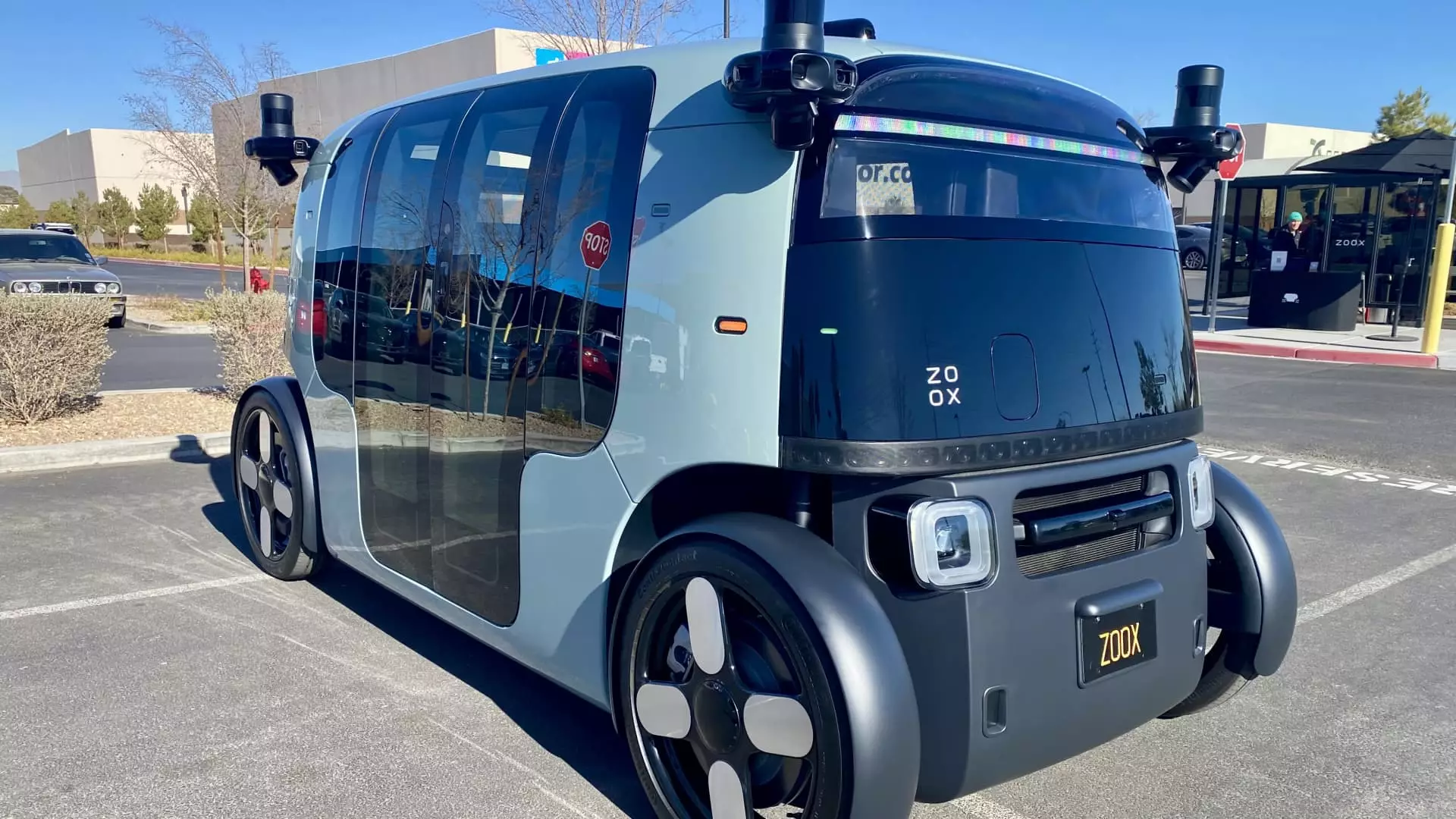As technological innovation accelerates, the autonomous vehicle sector is experiencing both excitement and skepticism, particularly as we witness a crucial year for several industry players. At the forefront of this movement is Amazon’s Zoox, which is staking a significant claim in the evolving robotaxi market. Founded a decade ago and acquired by Amazon for a staggering $1.3 billion in 2020, Zoox aims to carve a niche distinct from its competitors such as Waymo, which has set the standard for robotaxi services. The question remains: can Zoox successfully launch its unique model and navigate the choppy waters of commercialization?
Zoox is gearing up for a transformative phase in its operations. Co-founder and Chief Technology Officer Jesse Levinson has stated that the company hopes to start “offering rides to the public quite soon.” This statement represents more than mere optimism; it reflects a focused strategy to expand its fleet and operational regions. Currently, Zoox’s robotaxis are being tested in Las Vegas, San Francisco, and Foster City, California. Las Vegas is particularly significant as it is slated to be the first commercial market for the vehicle—a move that could set the stage for the future of urban mobility.
The timeline Zoox is proposing includes an “Early Rider Program” in Las Vegas that would precede a broader launch later this year. Such initiatives aim not only to gather valuable user feedback but to refine the technology further. Levinson’s ambition, however, is overshadowed by the challenges faced by others in the industry. With major players like General Motors and Ford closing their autonomous divisions, question marks loom over Zoox’s potential to remain viable in a competitive landscape riddled with pitfalls.
One of the most intriguing aspects of Zoox’s approach lies in its design philosophy. Unlike its competitors who have retrofitted conventional vehicles for autonomous capabilities, Zoox has engineered a purpose-built robotaxi devoid of traditional controls like steering wheels and pedals. This design methodology, however, has not escaped scrutiny. Critics often deride these vehicles as aesthetically unappealing—some have gone so far as to call them “toasters” or “boxes.” Yet, the focus should be on functionality rather than form. The interior layout, featuring rows of seats facing each other, promotes a social experience absent in traditional taxis.
Levinson expressed confidence in Zoox’s technological advancements, even as analysts like Sam Abuelsamid acknowledge the vehicle’s intriguing features while questioning the overall business model. The clear challenge lies in convincing the public to embrace such a radically different mode of transportation while simultaneously proving the economic viability of these robotic taxi services.
Zoox’s operational journey includes extensive testing phases aimed at fine-tuning its algorithms and ensuring safety on public roads. A recent test drive around Las Vegas illustrated that while the autonomous vehicle showed promise—making calculated turns and driving confidently—there were moments where decision-making could leave much to be desired. For instance, the vehicle’s reluctance to navigate around a large trailer posed risks that human drivers might typically avoid. A delicate balancing act exists for autonomous technologies: they must not only obey traffic regulations but also integrate effectively with human-driven vehicles.
The road to commercial viability is fraught with hurdles. We must reflect on the previous experiences of companies like GM’s Cruise, which had to halt operations following regulatory failures and accidents. Zoox must draw critical lessons from these situations to establish a reputation for safety and reliability.
The year ahead is crucial for Zoox, not only in terms of deploying its autonomous vehicles but also in solidifying its place within a considerably crowded landscape. The recent reluctance from investors and the discontinuation of some legacy automakers’ self-driving units reflects a broader uncertainty enveloping the industry. Will Zoox manage to stand out, or will it find itself trailing behind market leader Waymo, which has already achieved significant success with its own tele-operated fleets?
Levinson remains cautiously optimistic about Zoox’s trajectory, indicating that while immediate financial gains may not be the focus, the value it can provide in improving transportation options is paramount. The long-term vision entails establishing Zoox as a prominent player in urban mobility by the end of this decade. Furthermore, the competition is not only limited to technology but also the evolving business models necessary to sustain such operations in the long term.
In the grand scheme of things, Zoox represents an intersection of optimism and reality in the world of autonomous vehicles. Although the technological foundations are solid, the commercial pathways remain experimental. The true test lies ahead—if Zoox can successfully launch its services while navigating regulatory, safety, and public perception challenges, it may well become a trailblazer in the autonomous vehicle revolution. For now, the world awaits to see if Zoox’s vision can transcend mere ambition to reshape the urban landscape of transportation.

